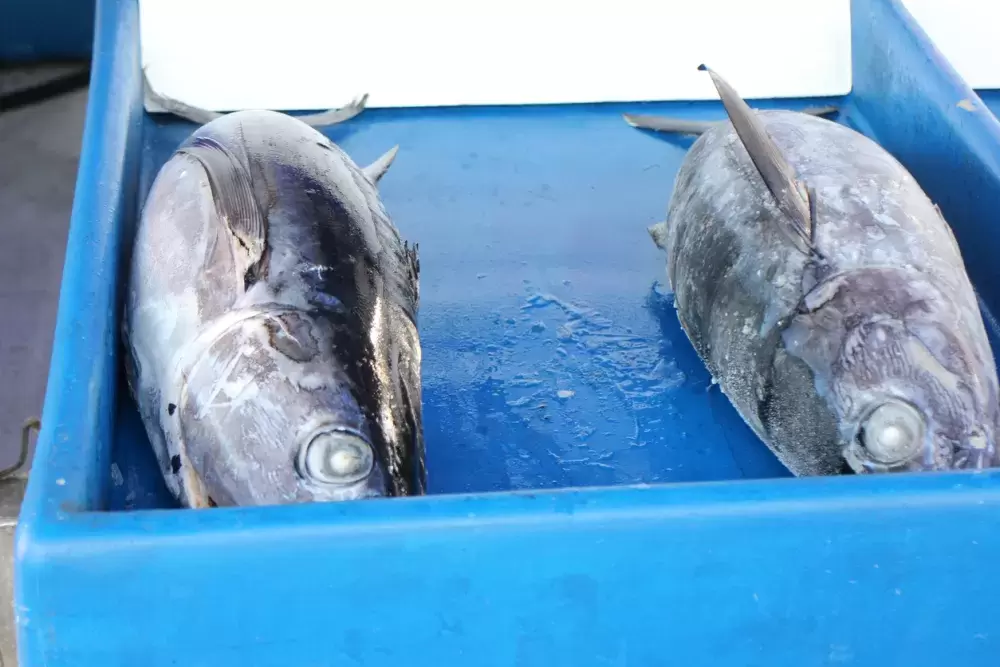Fisheries and Oceans Canada is changing how the tuna fishery is managed, with plans to gather input from coastal First Nations on the introduction of new licences.
With its activity far offshore, B.C.’s tuna harvest has historically been one of the few fisheries that does not require a specific tuna licence to catch the species. But DFO plans to change this with a new licencing system.
Currently boats can catch tuna with a valid commercial fishing licence (i.e., salmon, halibut crab, rockfish) as part of the Schedule II species section of their licences. In 2013, DFO introduced interim Pacific tuna licences that can be acquired by commercially licensed boats with tuna as part of their Schedule II species. DFO is now proposing to remove tuna from the Schedule II list of species and create a stand-alone tuna licence. Access to these licences would be limited to a fixed number of boats.
“DFO has heard the current licensing system for tuna does not provide adequate flexibility and imposes an unnecessary administrative burden on licence holders,” read a Pacific tuna discussion paper issued by the federal department this year. “Currently, tuna vessels are also subject to the vessel length restrictions associated with the primary licence, which raises potential safety concerns for vessels/harvesters wishing to participate in the tuna fishery (which often takes place several miles offshore, requires lengthy trips).”
There are no catch limits in the fishery, rather it is controlled by fishing effort (the number of boats fishing). The discussion paper notes that conservation isn’t currently a concern, but if control measures were needed in the future DFO has no means to manage its fishing effort. In recent years the number of Canadian boats harvesting Pacific tuna has remained relatively stable, with an average of 244 commercial licences issued annually since 2013. This is the target number of tuna licences DFO is considereing making available to fishers.
“Presently, there is limited participation of Indigenous groups in the Pacific Albacore tuna fishery,” stated the DFO discussion paper. “However, the department is interested in hearing from Indigenous groups regarding their views on these potential changes to tuna licensing and, in particular, options to support opportunities for Indigenous participation in the fishery.”
The proposed changes were discussed by representatives from Nuu-chah-nulth Nations last month at the Council of Ha’wiih Forum on Fisheries in Tsaxana, near Gold River, B.C. on June 14 and 15. The concept of new tuna licences was met with some skepticism.
“To me, this is a failed process already,” said Kiista (Keith Atleo), the Ahousaht Aww-uup-awii who was among the First Nation’s representatives at the forum. “There’s too many strings attached to these licences - too many strings and too many policies with each string.”
In recent years the Ahousaht First Nation has rapidly grown to encompass nearly 2,200 members, according to the Nuu-chah-nulth Tribal Council’s most recent count. Kiista questioned if a limited number of tuna licences would be able to sustainably support the growing needs of the Ahousaht community.
“We have some boats that are capable of taking this on. Will those licences be able to grow down the road?” he said. “I’m scared that number will be the same 10 or 15 years from now.”
Participation in the industry could benefit First Nations, said Andy Olson, fisheries manager for the Tseshaht First Nation.
“We don’t have that many people participating in the tuna fishing,” he said. “It’s an opportunity to keep people working and to keep our boats operating on a more regular basis.”
Olson added that although tuna is a different kind of fishing than what most Tseshaht are used to, the far offshore activity could bring opportunities.
“You can get a Canadian boat that’s licenced to fish in US waters as well as Canadian waters,” he said.
serted in earlier in article.







